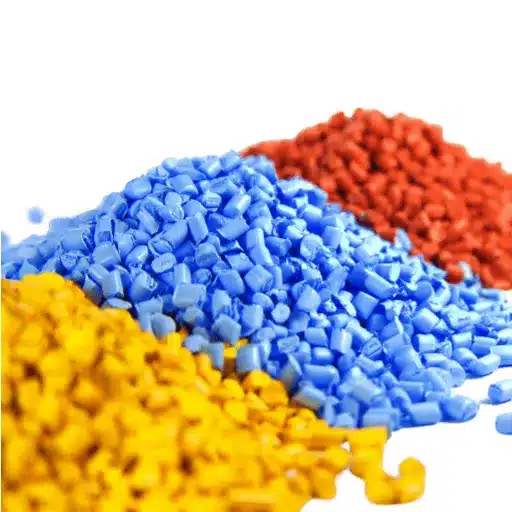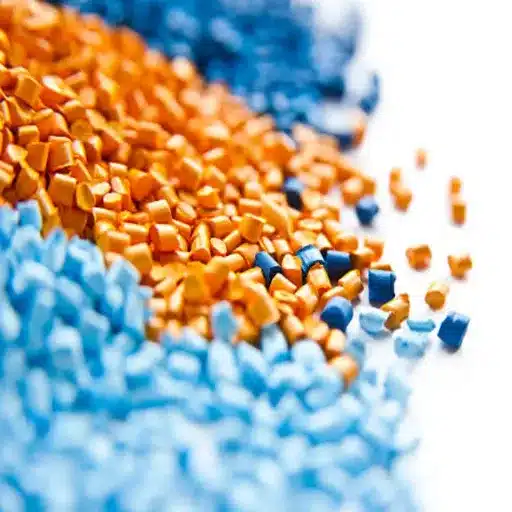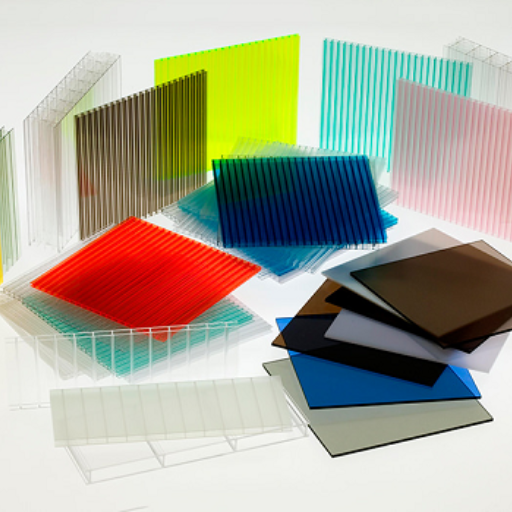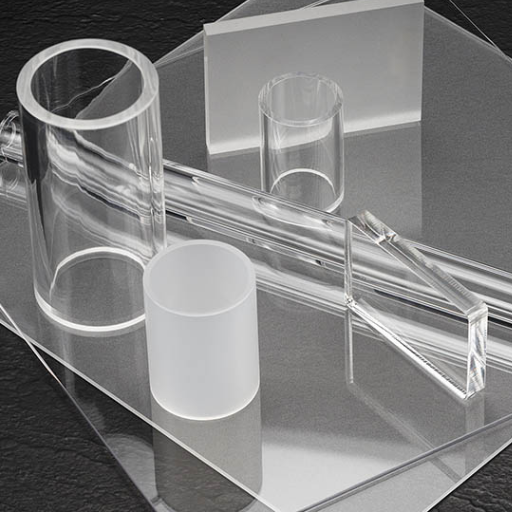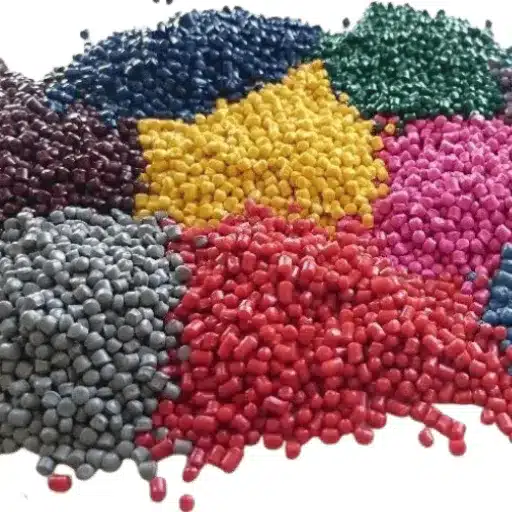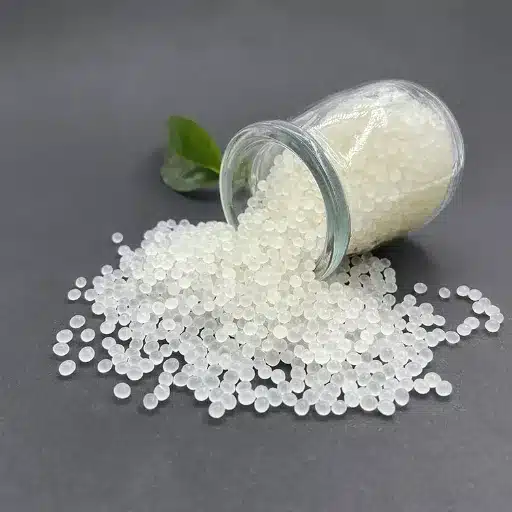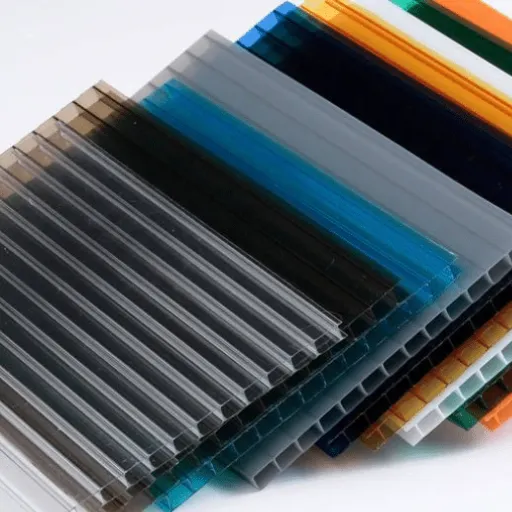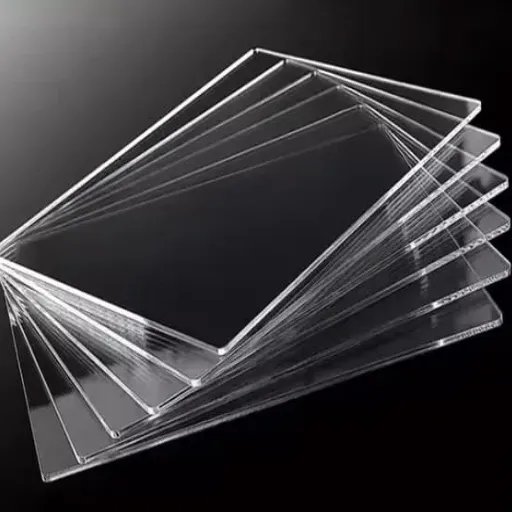Acrylonitrile Butadiene Styrene (ABS) is a leading material in modern plastic engineering besides its being one of the most versatile and most thermoplastics widely used in the world. Its exceptional blend of strength, durability, and lightness makes it very important in industries like Automotive, Electronics, Consumer Goods, and even 3D Printing. This article will discuss the properties of ABS in detail and the reasons why it is a preferred material for engineers and designers. It will also look into the numerous applications of ABS in different sectors and will point out the innovations that have been made in the use of this extraordinary plastic.
Please consider joining us if you are a professional in the industry, an engineer, or just a curious person who wants to know more about the future of materials science and ABS’s impact on it.
Introduction to Acrylonitrile Butadiene Styrene
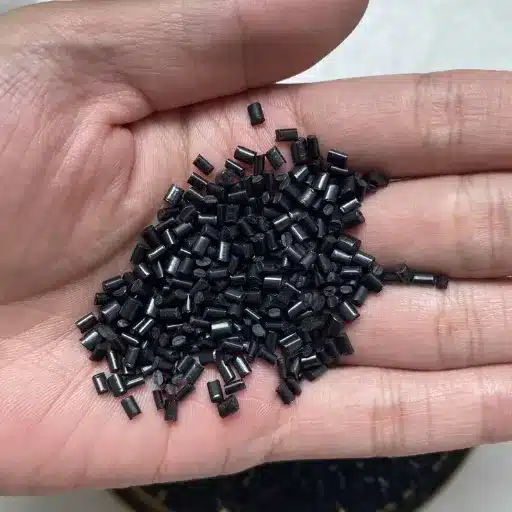
What is ABS Plastic?
ABS, also known as Acrylonitrile Butadiene Styrene, is a thermoplastic polymer with remarkable features such as strength, durability, and impact resistance. The resulting copolymer from the three monomers—acrylonitrile, styrene, and butadiene—possesses the best properties of each part. The components have the following effects: acrylonitrile gives the polymer resistance to chemicals and heat, butadiene gives it flexibility and toughness, while styrene gives it hardness and nice appearance.
Key Characteristics of ABS
- Lightweight: Ideal for applications requiring reduced weight without compromising strength
- Cost-Effective: Offers high performance at competitive manufacturing costs
- Recyclable: Aligns with modern manufacturing practices and sustainability goals
- Versatile: Extensively used across automotive, electronics, consumer goods, and 3D printing industries
History and Development of ABS
The story of Acrylonitrile Butadiene Styrene (ABS) is woven into the 1940s, the post-war period when industries desperately sought durable, flexible, and inexpensive materials in their production lines. With this material, polymer chemistry made a giant leap. The package was composed of three monomers—acrylonitrile, butadiene, and styrene—that gave the new plastic its quality and advantages over the already existing plastics.
By the 1950s, ABS started becoming popular commercially and enjoyed wide applications by manufacturers including auto parts, consumer goods, and electrical enclosures. The combination of the material’s durability, resistance to impact, and its ability to be shaped made it very attractive. Today, the application of engineering advances in polymer technology is continuously refining and improving ABS, thus making it suitable for not only 3D printing but also eco-friendly manufacturing practices.
Sectors like electronics, where it is crucial to have strong yet lightweight materials, drive the global demand for ABS, and there is still a lot of work to be done to find bio-based alternatives that can lessen the environmental footprint.
Composition and Structure of ABS
Acrylonitrile Butadiene Styrene (ABS) is a thermoplastic polymer with a very diverse application that is made of three monomers: acrylonitrile, butadiene, and styrene. In particular, acrylonitrile gives the polymer its resistance to chemicals and heat, whereas butadiene contributes the opposition against rupture, besides the polymer being not so brittle. Styrene adds strength to the polymer and reduces the difficulty of its processing.
In terms of structure, ABS is made up of a continuous phase of styrene-acrylonitrile (SAN) copolymer which is surrounded by polybutadiene rubber particles that are not fused to create a specified proportion of toughness and life.
Recent Developments: Efforts have been made on the composition of ABS in making it more sustainable through the incorporation of recycled content and bio-based alternatives. The use of blending additives for mechanical performance optimization directed towards different applications, with a particular focus on the automotive and electronics sectors, has been a major development. Such changes reveal the flexibility of ABS in accommodating fluctuating industrial and environmental requirements.
Properties of Acrylonitrile Butadiene Styrene
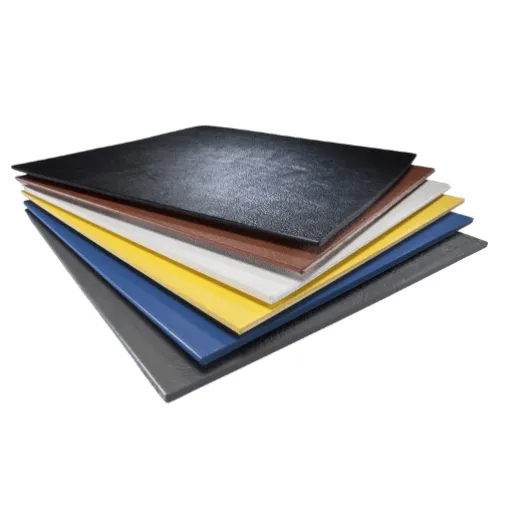
Mechanical Properties of ABS
Acrylonitrile Butadiene Styrene (ABS) is a material that is famous for its great compromise between strength, toughness, and rigidity. The mechanical properties of ABS, which are its main characteristics, make it a pretty versatile material that is suitable for a large number of different kinds of applications.
| Property | Value/Range | Significance |
|---|---|---|
| Tensile Strength | 29-45 MPa | Ensures material can withstand stress during its lifetime |
| Izod Impact Strength | 200-400 J/m | Perfect for applications requiring resistance to hard shocks |
| Flexural Modulus | 1,500-2,400 MPa | Demonstrates ability to hold up well under bending |
| Melting Point | 220°C – 230°C | Provides excellent thermal stability with mechanical characteristics |
The continuous progress in ABS compositions has not only continued to enhance these properties but also made the tough and the customized requirements for specific industries such as automotive panels and 3D printing applications achievable. With the help of these advancements, the limits of mechanical characteristics of ABS are being increased, besides giving attention to sustainability and performance demands.
Thermal Properties of ABS
ABS is a material that displays very good thermal properties and thus it can be utilized in many different kinds of applications. The glass transition temperature is typically between 105°C and 125°C, meaning that ABS has the capability of being molded and keeping its properties and dimensions during low to moderate heat. The melting point of ABS is not very well-defined because it is an amorphous polymer but the standard temperature of its heat deflection (HDT) is about 85°C to 105°C which may vary depending on the formulation.
Moreover, ABS is a thermal stable material that exhibits a degradation onset temperature normally above 220°C. This property guarantees that the material can be subjected to high temperatures during operations such as injection molding or 3D printing without significant degradation. The thermal stability of ABS can also be modified positively through adding fillers or blending with other materials, which increase its heat resistance and widen the scope of its application. These properties of ABS make it suitable for heavy-duty applications in the automotive, electronics, and consumer goods industries while at the same time providing thermal and mechanical reliability.
Chemical Resistance of ABS
ABS (Acrylonitrile Butadiene Styrene) is a plastic with good chemical resistance which makes it suitable for many applications of different types. Water, alkalis and acids like phosphoric and hydrochloric acid, to mention a few, are substances that do not affect the performance of this material. On the other hand, it is noticeable that some organic solvents, in particular acetone, toluene, and ethylene dichloride, can affect the surface of ABS, causing the material to degrade or lose its strength.
Chemical Resistance Overview
✓ Resistant to: Water, alkalis, phosphoric acid, hydrochloric acid
✗ Susceptible to: Acetone, toluene, ethylene dichloride, and other organic solvents
Current research brings out that the resistance of ABS can be further increased through the mixing of additives or chemical treatments that are specific to different industries; thus, making ABS capable of withstanding the harsh circumstances of industrial applications, such as industrial equipment and chemical containment systems. Knowing its weaknesses and improving its formulation are two major factors that will determine when the usage of ABS in diverse and creative applications will be expanded.
Applications of ABS Plastic
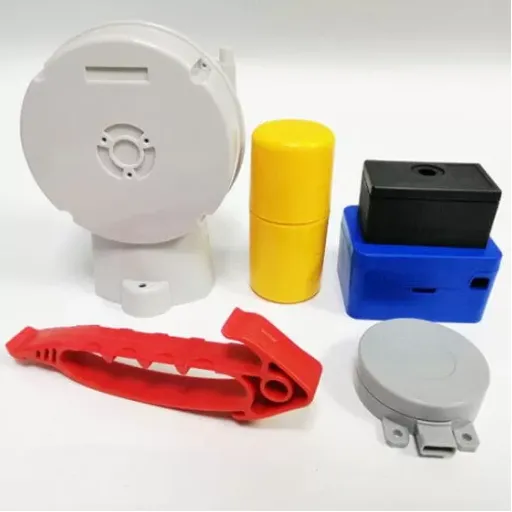
Industrial Applications of ABS
ABS plastic is a material that is nevertheless mainly employed in many industries because of its physical characteristics, the most important being its robustness, flexibility and easy-to-make products. Such applications include car parts, where robustness and complexity in shapes have transformed the material into the best candidate for making dashboards, trim panels and bumper parts among others.
Besides, ABS is highly appreciated in industrial piping systems as it is resistant to rust and chemicals, thus being appropriate for the movement of fluids in such places where the environment is very harsh. Moreover, the electrical and electronic industries use ABS for cases and housings since it gives the best balance of strength and insulation qualities.
Recent Industrial Developments
More developments have taken place that have enlarged the domain of ABS in 3D printing, making it possible for industries to do prototyping and produce parts in a cost-effective and fast way. Another issue that is becoming more and more popular is the use of recycled materials. One of the benefits of recycling ABS is that it is a way of reducing waste and the adverse impact of having an environment that is polluted.
The combined ongoing innovations and versatility of ABS keep on bringing up not only new but also better ways of applying it in the industry.
Consumer Products Derived from ABS
The ABS plastic is one of the most important materials in the manufacturing of consumer products thanks to the fact that it is highly durable, light, and impact-resistant. The most notable case is the electronic housings, which include those of televisions, computers and gaming consoles as they are the rare ones that require ABS to withstand the rigors of providing strong shielding for sensitive parts. Vacuum cleaning, kitchen appliances and storage are some examples of household goods where ABS is often chosen. Furthermore, the automotive sector has ABS in the list of indispensable materials for production processes of such parts as dashboards and wheel covers because of the material’s resistance to wear and tear.
The recent pattern of usage has shown a significant focus on non-toxicity and safety of ABS, with the most famous being the LEGO bricks illustrating the vast nature of its application in the toy industry. The fact that consumers are becoming more and more eco-conscious implies that there will be a larger influx of recycled ABS-made products that will give environmentally friendly solutions while not sacrificing quality. The broad range of applications for the material means that it will be a part of countless everyday consumer products.
Applications of ABS in the Automotive and Aerospace Industries
ABS is indeed a significant material for the automotive and aerospace sectors due to its top-notch properties such as being highly durable, lightweight, and cost-efficient. To be more specific, in the car industry, ABS is considered a perfect raw material to make dashboards, wheel rims, and trims for the passenger compartment as the plastic can take a great knock and be scratch resistant while still looking good. Furthermore, the cars with lighter bodies due to the use of this plastic gain better performance and fuel efficiency.
Just like that, the aerospace industry finds ABS highly recommendable for making strong yet light parts like seat frames, storage bins, and interior panels. The material can handle mechanical stress and temperature changes which is a major advantage in the case of such high-demand applications. On top of that, it is the advancements in additive manufacturing that has helped to position ABS as the go-to material for aerospace prototyping and parts manufacturing of intricate designs. The market is already showing that the demand for ABS in these industries keeps increasing as it is driven by innovations that are aimed at allowing designers to be more efficient and to also have less impact on nature.
Advantages of Using ABS over Other Plastics
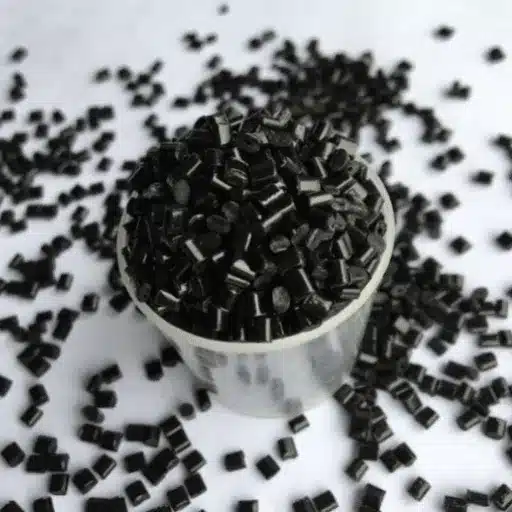
Key Advantages of ABS
1. Cost-Effectiveness of ABS
When it comes to thermoplastics, ABS (Acrylonitrile Butadiene Styrene) is one of the most cost-effective that can be obtained. It is suitable for both the small-scale manufacturers and large industries as it is very economical. The reason for this is the low production cost and the wide availability, which do not affect performance. Among other plastics, ABS is engineering’s best choice in terms of price and durability, which makes it a great option for budget-conscious projects. Global manufacturing sectors have increasingly preferred ABS due to its lowering of the total project cost while the required quality is still maintained. This trend points out the economic efficiency and material versatility of ABS as the dual feature that brings about material control.
2. Versatility in Applications
The peculiarities of ABS have made it the first choice in various industries, thus making it a ubiquitous material. ABS can be found in automobile parts, electronics casings, toys, and even houseware, wherein the material displays the utmost versatility. The excellent impact absorbance of the material, the ease of molding, and the adoption of coloring or finishing all to meet aesthetic requirements, render ABS indispensable in both large-scale manufacturing and bespoke design. The usage of ABS has increased enormously in areas like consumer electronics and 3D printing. This rise in demand is due to the lightweight yet durable nature of ABS, which coincides with the recent trend of making portable and high-performance products.
3. Durability and Longevity of ABS Products
When it comes to durability and longevity, ABS (Acrylonitrile Butadiene Styrene) is one of the materials that attract the most praise, hence a great choice for both industrial and consumer applications. The increasing use of ABS in consumer electronics and 3D printing is fueled by its resistance to considerable wear and tear while retaining its structure. The strong structure of ABS enables it to withstand extreme temperature changes, resist heavy impacts, and remain chemically stable throughout the years. This makes ABS not only suitable for long-term use in harsh environments but also a reliable material for the development of new innovations.
Limitations and Challenges of ABS
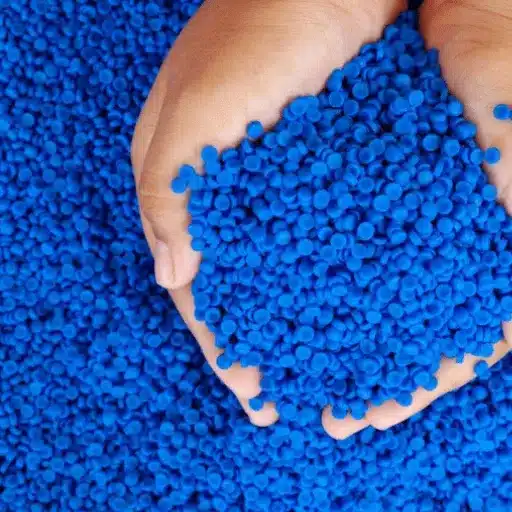
Environmental Concerns and Recycling Issues
ABS (Acrylonitrile Butadiene Styrene), although being very adaptable, still brings along with it some serious environmental issues. The main problem is that ABS is non-biodegradable which results in plastic waste being piled up in landfills and also in nature. Besides, recycling of ABS is quite limited due to the complexity of separating it from other materials as well as the reprocessing being an energy-consuming process. Technically, ABS can still be recycled, but the number of such facilities is limited, and a substantial amount of ABS waste is either incinerated or dumped which can cause possible pollution of air and soil.
⚠ Current Solutions Being Explored
Improving the recycling systems, and creating greener alternatives are among the ways researchers are trying to go around these obstacles. The preventive measures like chemical recycling techniques and hybrid bio-based plastics try to lessen the environmental impact of ABS products. Nevertheless, this process of getting change all over the place will need teamwork among different sectors, governments, and consumers, who will all be required to invest in the necessary infrastructure and give priority to the environment-friendly way of producing goods.
Performance Limitations of ABS
Polymer made by combining Acrylonitrile Butadiene and Styrene (ABS) is highly regarded for its strength, durability, and flexibility, however, it still has performance limitations. One of the major restrictions is its being influenced by UV radiation, which can degrade and discolor the material over time, in this case, sunlight is the factor reducing the material’s life in outdoor applications. Furthermore, ABS has a rather low tolerance to high temperatures, with a maximum limit of around 176°F (80°C) for its use, after which warping or loss of strength may occur.
| Limitation | Description | Impact |
|---|---|---|
| UV Sensitivity | Degrades and discolors under prolonged sunlight exposure | Reduces material life in outdoor applications |
| Temperature Tolerance | Maximum use temperature around 176°F (80°C) | Warping or loss of strength at higher temperatures |
| Chemical Resistance | Limited resistance to acidic and alkaline substances | Not suitable for some industrial applications |
| Load Bearing | Likely to crack under pressure without adequate support | Limits long-term load-bearing applications |
There is an ongoing development of new materials and additives which are expected to solve these problems, but the limitations of ABS still need to be taken into account before putting it in demanding environments.
Comparative Analysis with Polycarbonate and Other Polymers
When ABS (Acrylonitrile Butadiene Styrene) is set against polycarbonate (PC), the differences relating to strength, flexibility, and thermal stability are mainly observed. Polycarbonate is acknowledged for its excellent impact resistance and capacity to endure higher temperatures thus becoming suitable for various high-demand applications such as optical discs, bulletproof glass, and protective gear. Meanwhile, ABS brings the advantage of being easier to manufacture and being more economical due to its lower production costs, thus making it appropriate for such consumer goods as toys, car parts, and electronics shells.
| Material | Key Strengths | Primary Applications |
|---|---|---|
| ABS | Easy to manufacture, cost-effective, good balance of properties | Toys, automotive parts, electronics casings |
| Polycarbonate (PC) | Excellent impact resistance, high temperature tolerance, optical clarity | Optical discs, bulletproof glass, protective gear |
| Polypropylene (PP) | Great chemical resistance, fatigue resistance, flexibility | Food containers, medical devices, automotive components |
| Polyethylene (PE) | Amazing flexibility, shock absorbency | Packaging films, containers, pipes |
PP and PE, two other types of polymers, have their benefits too. For example, on one side, while PP offers great resistance to chemicals and is also resistant to fatigue, it is still very skillful and strong as compared to ABS. PE, on the other hand, has amazing flexibility and shock absorbency with the drawback of being possibly deformed under high temperatures or stress depending on its density which limits its application compared to ABS and polycarbonate.
The decision between using ABS versus polycarbonate or other polymers depends largely on the end-use scenario. While ABS is the best in terms of price and processing, polycarbonate is the best choice if impact resistance and clarity are essential. The development of new blends and additives is ongoing and would result in the adjustment in the performance profile of these polymers, enabling them to be used in increasingly complex areas of industry and consumption.
Recent Trends and Innovations in ABS Technology
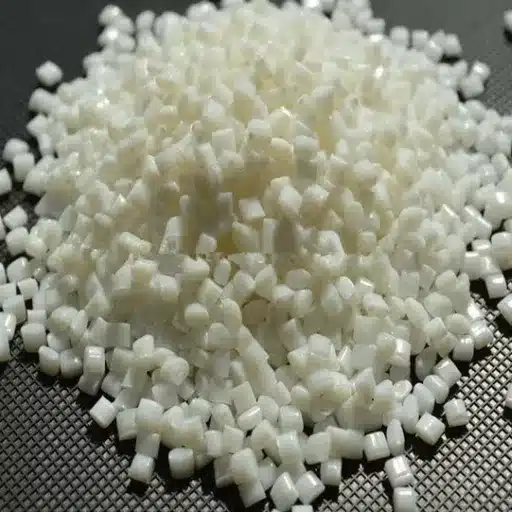
Advancements in ABS Manufacturing Processes
Emphasis on automation and sustainability is the main feature of recent advancements in ABS manufacturing processes. Production times are reduced, and costs are lowered by implementing automated systems slowly but surely. By utilizing robotics and AI-powered quality control, human error has been reduced to a minimum, thus guaranteeing uniformity in material properties as well as product output.
At the same time, the sustainability initiatives are supporting the reduction of the carbon footprint of the industry. Projects aimed at the inclusion of recycled materials in ABS manufacturing and energy reduction during polymerization are indications of the increasing consumer orientation towards nature-friendly manufacturing. The developments in catalyst technologies have also led to better efficiency and lower emissions which are conducive to the achievement of global sustainability objectives. All of these advancements considered together lead to an evolution in ABS manufacturing that is responding to both modern industrial and environmental needs.
New Additives and Copolymers Enhancing ABS
New additives and copolymers have been the major factors for the enhancement of the performance and versatility of ABS (Acrylonitrile Butadiene Styrene) in a significant way. Among the recent innovations, the introduction of impact modifiers, flame retardants, and UV stabilizers is mentioned, all of which together not only improve durability and safety but also slow down the process of environmental degradation of the materials.
Key Enhancements Through Additives
- Impact Modifiers: Enhance toughness and resistance to shock
- Flame Retardants: Improve safety standards for electronics and automotive applications
- UV Stabilizers: Slow down environmental degradation and extend outdoor lifespan
- Bio-based Copolymers: Reduce dependency on petroleum-based materials for sustainability
Moreover, the addition of bio-based copolymers and fillers is allowing ABS production to be in line with the sustainability trend by using less and less petroleum-based materials. These developments are giving ABS the ability to comply and even surpass the stringent requirements of various industries including automotive, electronics, and healthcare, while at the same time adapting easily to the changing environmental standards and application requirements.
Case Studies: Innovative Uses of ABS in Various Industries
🚗 Automotive Industry
Strength, lightweight and design flexibility, these are the characteristics that have turned ABS into a key material for the automotive industry. Manufacturers of cars, for example, are taking advantage of ABS to make dashboards, trimmings, and bumpers that resist minor impacts. The components not only make the car more attractive but the reduction of the overall weight also contributes to the car’s fuel efficiency. An industry report found that the use of ABS for electric vehicle (EV) components has been increasing steadily, the reason for its insulation against electric current and heat resistance being very important.
💻 Electronics and Appliances
The electronics sector is heavily dependent on ABS as it is the only material that can give all the previously mentioned properties and moreover, it is easy to work with. The most common applications are the casings for TVs, laptops, and mobile phones. Manufacturers are also using ABS in smart home devices such as hubs and voice command devices, as it allows for complex designs while still being safe. Trends in market research indicate that there is a growing demand for green and recycled ABS materials in consumer electronics which is a good sign for the environment.
⚕️ Healthcare Applications
The use of ABS in the healthcare sector is mainly for the manufacture of medical devices and equipment housings like inhalers and syringes, and even prosthetics. The material’s biocompatibility and sterilizability make it the preferred material in hospitals. Latest advancements include the use of antimicrobial additives in ABS production, addressing hygiene and infection control issues. It has been reported that health professionals are shifting to ABS-based tools because they serve the purpose as well as meet the regulations.
The sample cases highlight the versatility of ABS in different applications and how the technology in material science is still pushing its usage in the industrial sector.
Frequently Asked Questions
What are the mechanical properties of ABS plastic?
The main characteristics of ABS plastic are the excellent impact resistance, toughness, and rigidity but if it is blended with other materials it can certainly be pushed to the next level thus winning the hearts of the plastics industry. It stands up to low temperatures and still keeps good mechanical properties which is the reason for its broad spectrum of uses. The tough nature of ABS helps it take the load at a significant stress level without changing the shape. On account of its being injection-molded and extruded, ABS is extensively used in the making of intricate shapes and prototypes for many different kinds of plastic products.
How is ABS plastic used in different applications?
The plastic known as ABS is utilized in a plethora of applications due to its adaptability and supportive attributes. Among the primary uses are the production of long-lasting items like pipe fittings, car component parts, and electrical housings. The process of injection molding not only enables the production of high-volume items with intricate designs but also causes the use of ABS to be very economical because it is usually produced from materials that are quite inexpensive. The fact that ABS can resist impacts promotes its use in the production of products that require toughness like toys and electronics. All in all, ABS can find applications in a number of industries, proving its importance in the realm of engineering plastics.
What is the significance of polybutadiene in ABS?
The presence of polybutadiene in ABS greatly contributes to its impact resistance and toughness. The rubbery material makes the overall performance of acrylonitrile butadiene styrene plastic better so that it can suffer impacts without the risk of cracking or breaking. During the production process, by coming together and forming a bond, polybutadiene and the other monomers result in a material that is tougher. Besides, this feature makes ABS appropriate for those applications that call for both endurance and stretch, like in the automotive and consumer goods industries. Knowing the function of polybutadiene allows producers to fine-tune the composition of ABS for certain criteria.
Is it possible to blend ABS with other materials?
Absolutely, the blending of ABS with other materials to enhance its characteristics and performance is a common practice. The plastic industry benefits from the development of various ABS grades that are specifically designed for applications as a result of this ability. Provided the blending is done with polycarbonate, the resulting product will not only be of higher strength but also will be more resistant to impacts. Moreover, the blend might lead to the final product’s improved thermal stability and aesthetic aspects. This acceptance in blending makes ABS a material of choice for the engineers who are looking to adjust the performance characteristics of the plastic materials according to different usages.
Reference Sources
| Institution | Research Focus |
|---|---|
| Miami University | A detailed blog discussing the properties and uses of ABS plastic in various industries. Understanding the Properties and Uses of ABS Plastic |
| Louisiana State University | A thesis exploring VOC emission factors from 3D printers using ABS as a filament. VOC Emission Factors from 3D Printers – ABS |
| Utah State University | A graduate report on the pyrolysis of ABS under high temperatures, focusing on its industrial applications. Pyrolysis of Acrylonitrile-Butadiene-Styrene (ABS) |
Summary and Conclusion
Acrylonitrile Butadiene Styrene (ABS) stands as one of the most versatile and widely-used thermoplastic polymers in modern manufacturing. Its unique composition—combining acrylonitrile for chemical and heat resistance, butadiene for flexibility and toughness, and styrene for hardness and processability—creates a material that offers an exceptional balance of properties suitable for countless applications.
Throughout this comprehensive guide, we have explored the fundamental properties of ABS, including its impressive mechanical strength with tensile strength ranging from 29-45 MPa, excellent impact resistance with Izod impact strength of 200-400 J/m, and reliable thermal properties with a glass transition temperature between 105°C and 125°C. These characteristics make ABS an ideal choice for demanding applications across multiple industries.
The applications of ABS span from automotive dashboards and bumpers to electronic housings for televisions and computers, from consumer products like LEGO bricks to aerospace interior components. Its cost-effectiveness, ease of processing through injection molding, and ability to be colored and finished to meet aesthetic requirements make it indispensable in both large-scale manufacturing and specialized design projects. The material’s versatility is further enhanced by recent innovations in 3D printing technology, where ABS has become a preferred filament choice.
However, ABS is not without its limitations. Environmental concerns regarding its non-biodegradable nature and recycling challenges remain significant issues that the industry continues to address. Performance limitations such as UV sensitivity, moderate temperature tolerance, and susceptibility to certain organic solvents must be carefully considered when selecting ABS for specific applications. The ongoing development of new additives, including impact modifiers, flame retardants, UV stabilizers, and bio-based copolymers, aims to overcome these challenges while expanding the material’s capabilities.
Recent trends in ABS technology demonstrate the industry’s commitment to sustainability and performance enhancement. Advancements in manufacturing processes incorporating automation, robotics, and AI-powered quality control are reducing production times and costs while ensuring consistency. The integration of recycled materials and the development of hybrid bio-based plastics represent important steps toward reducing the environmental footprint of ABS production.
As we look to the future, ABS will continue to play a crucial role in plastic engineering and manufacturing. The material’s ability to be blended with other polymers like polycarbonate for enhanced properties, combined with ongoing innovations in additives and processing techniques, ensures that ABS will remain relevant and valuable across diverse industries. Whether you are an engineer selecting materials for a new project, a manufacturer optimizing production processes, or a researcher exploring sustainable alternatives, understanding the properties, applications, and innovations surrounding ABS provides the foundation for making informed decisions that balance performance, cost, and environmental responsibility. The journey of ABS from its post-war origins to its current status as a cornerstone of modern manufacturing exemplifies the power of material science to transform industries and improve our daily lives.







